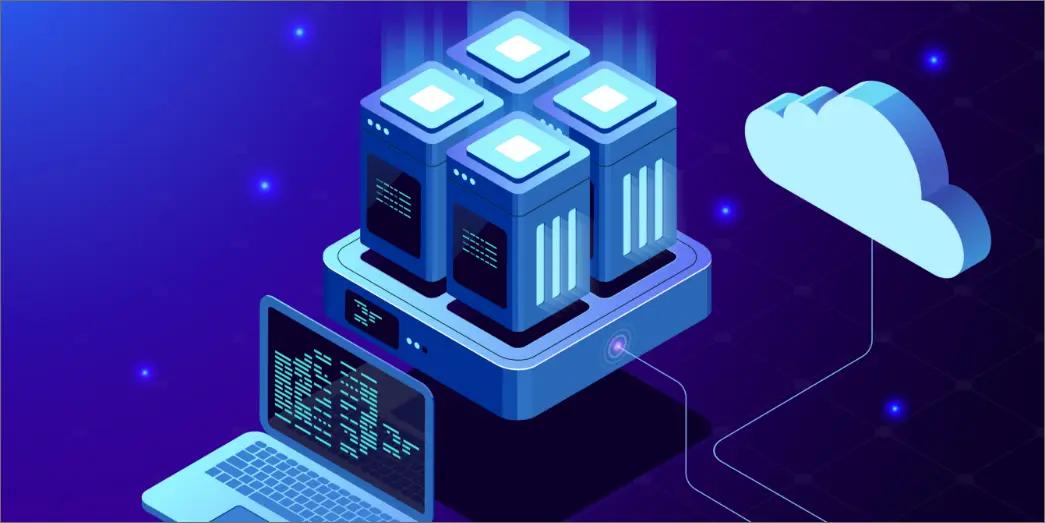
BLOG
04 mins read
Create Virtual Machines Using Microsoft Azure, Google Cloud, Oracle Cloud And AWS
Vinoth
Posted: Jul 25, 2023
Table of Contents
Introduction
In today’s cloud computing, virtual machines are gaining importance since they provide enterprises of all sizes with flexibility, scalability, and affordability. Several well-known cloud service providers stand out for their robust architecture and extensive selection of choices for creating virtual machines. To provide you with a complete starting point, we’ll examine how to set up virtual machines utilising Microsoft Azure, Google Cloud, Oracle Cloud, and AWS (Amazon Web Services).
https://www.vmware.com/in/topics/glossary/content/virtual-machine.htmlWhether you want to benefit from simulated machines as a developer, IT expert, or company owner, this blog will give you the information and skills essential to properly handle the virtual machine development process on these important cloud platforms.
Step-By-Step Guide To Creating A Virtual Machine On Azure
Visit portal.azure.com to access the Azure portal.
Making the proper virtual machine instance selection: Depending on your workload needs (such as CPU, memory, and storage), select the desired virtual machine size. Consider factors like cost, performance, and user concurrency.
Making settings for the virtual machine: The name and location of your virtual machine should be specified. Select the desired operating system and version. Set up the storage options, including the OS disk’s type and size as well as any additional data discs.
Setting up the virtual machine Choose the desired authentication method (password or SSH key) to gain access to the VM.
Create a subnet, virtual network, and a public IP address to enable networking.
Examine and modify any additional settings, including those for monitoring, diagnostics, and availability.
Connecting to and managing the virtual machine: Once the VM has been created, you can access it via SSH for Linux VMs or Remote Desktop Protocol (RDP) for Windows VMs.
Install and set up any necessary programmes and software.
Utilising tools like Azure Monitor, Azure Automation, and Azure Virtual Machine Scale Sets, you can keep an eye on and control the VM from the Azure interface.
These steps will let you create a virtual computer on Microsoft Azure, by start using its features and capabilities for your particular use case. Virtual machines in for running your programme in the cloud, Azure provides an effective and configurable architecture. giving you the agility and scalability required to meet your business consumer demand.

Step-By-Step Guide To Creating A Virtual Machine On Google Cloud
At console.cloud.google.com, The Google Cloud Console is available.
A suitable virtual machine instance should be chosen: Depending on your needs for CPU, memory, and storage, choose the appropriate machine type.
Think about things like performance, expense, and the workload you plan to run.
When defining the virtual machine settings, the instance name, region, and zone where the virtual machine will be installed must be specified.
Select the desired operating system and version.
Set up storage choices like the boot disk’s type and size.
Setting up the virtual machine Set up the virtual private cloud (VPC) network and subnet, among other networking settings.
Establish firewall policies to manage incoming and outgoing traffic.
You can connect to and use either the SSH or RDP protocols, depending on the operating system and administer the virtual machine after it has been deployed.
Install and set up any required programmes and software.
To monitor and control your virtual machine, use Google Cloud management tools like Cloud Monitoring and Logging.
You may utilise Google Compute Engine’s cutting-edge features and scalable architecture for your apps by following these instructions to construct virtual machines on it. support with Google’s cutting-edge technologies and broad network capabilities, running your workloads in the cloud is made possible by the trustworthy and flexible Google Compute Engine infrastructure.
Step-By-Step Guide To Creating A Virtual Machine On AWS
Sign up and navigate the AWS Management Console: Create an AWS account if you don’t have one. Access the AWS Management Console (console.aws.amazon.com).
Choosing the appropriate EC2 instance type: Select the desired instance type based on CPU, memory, storage, and networking requirements.
Consider factors such as performance, cost, and the workload you intend to run.
Configuring the virtual machine settings: Specify the instance details, including the region, availability zone, and instance count.
Choose the desired AMI based on the operating system and software requirements.
Configure instance storage options, such as EBS volumes and instance store volumes.
Provisioning the virtual machine: Set up networking options, including VPC, subnets, and security groups.
Configure additional options, such as IAM roles, user data, and tags.
Review and adjust advanced settings, such as instance monitoring, termination protection, and instance metadata.
establishing a connection with and controlling the virtual machine: You can use SSH for Linux or RDP for Windows to connect to the instance once it has been provisioned.
Install and configure any necessary software and applications.
Utilize AWS management tools, such as AWS Management Console, AWS CLI (Command Line Interface), AWS SDK CLI (Command Line Interface), or AWS SDKs (Software Development Kits), to manage and monitor your virtual machine.

Conclusion
Therefore, by building virtual machines on cloud computing infrastructure like Microsoft Azure, Google Cloud, and Oracle Cloud, also businesses may fulfil their computing demands with the flexibility, scalability, and cost that AWS offers. Users can select the finest platform for their needs because each one offers special features and advantages.
By embracing the potential of virtual machines on cloud platforms, organisations can focus on innovation and expansion while leaving the maintenance of the underlying infrastructure to the cloud providers. With the help of Microsoft Azure, Google Cloud, Oracle Cloud, and AWS, you can deploy and create simulated machines which advance the goals of your organisation and propel advancement into the digital age.
Related Blogs
How AI & ML Is Transforming The Farming Industry?
The farming industry is poised for a remarkable transformation as it embraces the best technologies available. From precision agriculture and resource optimization to sustainable practices and data-driven decision-making, these technologies have the potential to revolutionize traditional farming methods. By leveraging innovation, farmers can unlock a multitude of benefits, including increased productivity, optimized resource management, enhanced sustainability, and data-driven insights.
Evolution Of Testing From Manual To Automation
Testing is a crucial process in software development that involves evaluating the quality, functionality, and performance of a software system. It is performed to identify defects, errors, or issues and ensure that the software meets the desired requirements and performs as expected.
Cybersecurity - How To Manage Your Digital Identity?
In the wild, wild west of the digital frontier, wrangling your business’s digital identity is like taming a band of unpredictable cyber outlaws. Picture yourself as the digital sheriff; your mission is to maintain law and order in this vast online town.
Create Virtual Machines Using Microsoft Azure, Google Cloud, Oracle Cloud And AWS
In today’s cloud computing, virtual machines are gaining importance since they provide enterprises of all sizes with flexibility, scalability, and affordability. Several well-known cloud service providers stand out for their robust architecture and extensive selection of choices for creating virtual machines.
Industrial IoT - How Car Manufacturers Use IoT In Their Assembly Lines?
IIoT in the automotive world means connecting every component and device, turning them into data sources that communicate in real-time. Sensors embedded in machines monitor their health, while smart devices oversee quality control. The result is a seamless blend of human expertise and machine precision.
Is Outsourcing A Viable Option In 2023?
Outsourcing is a strategic business practice in which organizations delegate specific tasks, functions, or processes to external third-party service providers rather than handling them in-house. This approach offers numerous advantages, including cost savings, access to specialized skills, and increased operational efficiency.
Agile IT Product Development
Agile IT Product Development has become a buzzword in the software development industry in recent years, as businesses strive to keep up with the fast pace of technological advancements and changing market demands. In essence, Agile is a methodology that emphasizes iterative and collaborative development, continuous improvement, and customer feedback.
Flutter 2023 And Beyond
In 2023, Flutter stands at the forefront of the mobile app development landscape, continuing its remarkable journey of growth and innovation. This open-source framework, developed by Google, has evolved from its initial release into a versatile powerhouse, offering an extensive set of tools and capabilities.
MongoDB Lets Developers Say No To Structural Databases.
When it comes to database systems, developers have a lot of options to choose from. There are traditional relational database systems, such as MySQL and Microsoft SQL Server, as well as newer NoSQL database systems, such as MongoDB and Cassandra.
Advantages Of Using SDN & SDWAN
The network is the backbone of any business. It is responsible for connecting people and devices, and it enables the flow of information and resources. A well-designed network can be a powerful tool that helps businesses run more efficiently and effectively.
How does the NextGen IoT with Bluetooth Connectivity via Satellite, benefit the environment and diverse industries?
The application of Bluetooth technology via satellite communication for IoT opens up a myriad of possibilities across various industries, revolutionizing the way we approach connectivity and data transmission.
Real Time Practical Challenges of MPLS to SDWAN Migrations
People are consistently intrigued by the real-time or practical challenges encountered during SD-WAN migration.
Real Time Practical Challenges of MPLS to SDWAN Migrations
People are consistently intrigued by the real-time or practical challenges encountered during SD-WAN migration.
How does the NextGen IoT with Bluetooth Connectivity via Satellite, benefit the environment and diverse industries?
The application of Bluetooth technology via satellite communication for IoT opens up a myriad of possibilities across various industries, revolutionizing the way we approach connectivity and data transmission.
Anonymous Feedback And Survey System
Integrating an anonymous feedback and survey system into your company’s operations is a strategic move towards nurturing a culture of open communication, continuous improvement, and employee engagement. In today’s dynamic business landscape, understanding the perspectives, concerns, and ideas of your workforce is paramount.
AI In Data Security
Gone are the days when locking doors and shredding documents were enough to protect sensitive information. With the rapid advancements in technology, a new player has emerged on the scene: Artificial Intelligence (AI).

Let's talk.
Need a Consultation!
Need help in turning your idea into a successful product? Talk to us. We can help you build your product quickly and ensure it can scale infinitely.
Let's talk.














